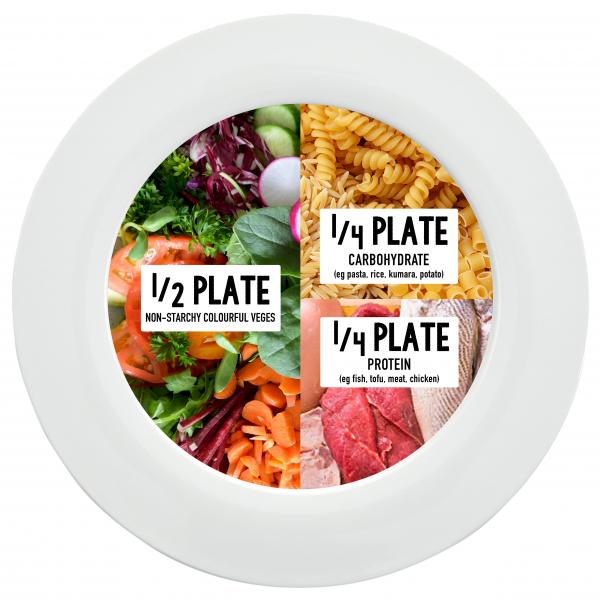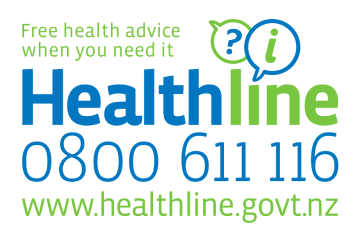Type 1 Diabetes In Children - General Guidelines On Nutritional Management
Type 1 Diabetes In Children - General Guidelines On Nutritional Management
A healthy diet will provide the right building blocks for growth and development and support children and young people with type 1 diabetes to keep active and feel well.
Key points on nutritional management of type 1 diabetes
- a healthy diet gives your child the best building blocks to grow, develop and feel well
- thinking carefully about types, timing and quantities of food means you can correctly match food with meal-time insulin
- keep foods that are high in fat, sugar and salt for special occasions only
- understanding carbohydrate content in food will help you to work out the right doses of insulin to match to snacks and meals
- low carbohydrate diets are not recommended for children and young people
- your child's diabetes team can give you advice that's right for your child

General guidelines on the nutritional management of type 1 diabetes
These nutrition recommendations are for children and young people with type 1 diabetes. They are based on healthy eating principles suitable for all children, young people and their whānau.
There are some special considerations needed around food for children and young people with type 1 diabetes. Your dietitian can give you more details and advice that's right for your child or young person.
Meals
Have 3 regular meals everyday and avoid continuous snacking or grazing.
Eat together as a family as often as possible.
Make meals ‘distraction free’ by taking a break from devices and other activities at meal times.
Food choices
Choose a variety of healthy foods from each of the food groups, such as fruits, vegetables and whole grains.
Include some carbohydrate (CHO) foods at each meal.
Include a small carbohydrate snack in between meals that is less than 15g of carbohydrate.
Snacks
Treat snacks with greater than 15g of carbohydrates like a meal. Cover them with insulin (unless exercising at this time).
Low glycaemic index (GI) foods
Try to include low glycaemic index (GI) foods with meals and snacks.
Avoid foods and drinks that are high in sugar such as sweets, cordial and fruit juice (unless used to treat hypoglycaemia).
Insulin
Work out the right amount of meal-time insulin based on the timing of meals and snacks and how much food your child is eating.
If giving rapid-acting insulin (Novorapid/Humalog/Apidra) give it 15 minutes before eating a meal.
Food choices for children and young people with type 1 diabetes
Everyday foods and sometimes foods (for special occasions)
Keep foods that are high in fat, sugar and salt for special occasions only. It’s best not to offer these foods as regular snacks. Examples of foods you might offer on special occasions include potato chips, muesli bars, chocolate, lollies, cakes, sweet biscuits, pies and pastries.
Low-carbohydrate diets are not recommended for children
Low-carbohydrate diets are not recommended for children. Studies have shown that low carbohydrate diets can lack key nutrients and may affect your child's growth. Restriction of carbohydrates may also increase the risk of hypoglycaemia (low blood glucose levels).
Low carbohydrate diets may also make your child more likely to develop disordered eating behaviours.
Talk to your dietitian for more advice and support to make sure your child is meeting their nutrition needs.
You can read about emotional and mental wellbeing in children with diabetes. It includes information on eating disorders.
Find out if your child with diabetes is at risk of an eating disorder
Limit intake of high fat (especially saturated fat) food
- choose lean cuts of meat (removing visible fat from meat and skin from chicken) and limit processed meats
- limit high fat snacks and takeaway meals and eat more whole foods that contain good amounts of dietary fibre
Note: A low fat diet is not recommended for children under the age of 2 years.
Why are carbohydrates important for my child with type 1 diabetes?
Of the 3 main nutrients (carbohydrate, protein and fat) in food, carbohydrate has the most direct effect on blood glucose levels.
Learning how to calculate the amount of carbohydrate in meals and snacks (carbohydrate counting) is an important tool in the management of type 1 diabetes. It will help your child to increase food choices. It will also help to keep your child’s blood glucose levels in the target range.
Carbohydrate counting
There are several ways to count the carbohydrate content of meals and snacks.
For example, you can count:
- grams of carbohydrates
- 10g carbohydrate portion (based on Dose Adjustment for Normal Eating (DAFNE))
- 15g carbohydrate serving or exchange
A gram (g) is a unit used in measuring foods. You will see it when learning to read food labels and when using resources that list the nutrient content of whole foods.
Carbohydrate counting is best started at diagnosis of type 1 diabetes. It can be introduced at any time when a family or young person are keen to add this to their toolkit.
Speak to your dietitian for more advice and support about carbohydrate counting and what method works best for you and your child.
Matching insulin to food
Some young people are prescribed background insulin (‘basal’ insulin) and meal-time insulin (‘bolus’ insulin) by injections. Some young people use insulin pumps to deliver their insulin.
Insulin to carbohydrate ratio (ICR)
The insulin-to-carbohydrate ratio (ICR) is expressed as number of grams of carbohydrate per unit of rapid acting insulin (that is, 20g:1u). This is used to give a dose of insulin to match the total amount of carbohydrate in a particular meal or snack.
The ICR allows flexibility at meal times. Rapid acting insulin is matched to the total carbohydrate in a meal - instead of having a set dose of insulin for every meal (which requires a fixed amount of carbohydrate). If your ICR is correct, blood glucose levels 2 to 3 hours after meals should be similar (within 2 to 3 mmol) to the pre-meal blood glucose level. It is common to have more than one ICR over the day.
Insulin sensitivity factor (ISF)
The insulin sensitivity factor (ISF) is also known as a correction factor. It describes how many mmol one unit of rapid insulin will lower blood glucose levels by. This allows you to work out how much insulin to give to correct a glucose level back into the target range.
For example, an ISF (or correction factor) of 1:4 mmol, means 1 unit of fast-acting insulin will drop your blood glucose by 4 mmol. Your ISF will depend on how sensitive you are to rapid insulin. To avoid stacking, insulin corrections should only be given every 3 hours (unless you take into account insulin on board).
Working with your child’s diabetes team
The ICR and ISF are specific to each young person. Your diabetes team will help you work this out. It is important to work with your child’s diabetes team to make sure your child’s insulin regimen is not too complicated.
For more detailed information, talk to your child’s dietitian and diabetes team.
Physical activity
Aiming for at least 60 minutes of physical activity each day is important for all children and young people.
See the KidsHealth page on encouraging children and young people with diabetes to be active
Insulin adjustment with extra carbohydrates may be needed to avoid hypoglycaemia (low blood glucose levels).
It depends on the following:
- type of activity
- if the activity was planned or unplanned
- time of day
- length of time of activity
- intensity of activity
Talk to your dietitian and diabetes team about specific physical activity recommendations for your child.
This page last reviewed 27 March 2023.
Do you have any feedback for KidsHealth?
If you have any feedback about the KidsHealth website, or have a suggestion for new content, please get in touch with us.
Email us now